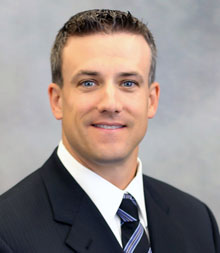
Message from your doctor…
Whether you or one of your family members or friends is considering shoulder subacromial decompression/distal clavicle excision, or are scheduled for surgery, I understand this can be a stressful time. And you may have forgotten some of the information we discussed during our last visit, or forgot to ask me a specific question about what to expect. This site is designed to help us stay connected, and to answer some of the most common questions patients ask me about shoulder arthroscopy.
If you’re scheduled for surgery, please sign up below to receive pertinent post surgical and recovery information from me via text message or email. I want to make sure that both you and your family members have timely information at your fingertips during the days, weeks, and months following your surgery…so you can get back to enjoying the activities you love.
Do you have a surgery date?
Click below to sign up for our post surgery and recovery information program.
RECOVERY TIME POINTS
SUBACROMIAL DECOMPRESSION
7-10 days post-op
You will have your first office visit. You will review surgical pictures and discuss the procedures. Please feel free to ask any questions.
4-6 weeks post-op
You will have another office visit to check your range of motion and pain level. Most patients will have full shoulder motion at this time. You may resume any activity that you’d like. If you are happy with how the shoulder feels, you may follow-up as needed after this office visit. You are welcome to make future appointments.
MOST COMMON QUESTIONS
SUBACROMIAL DECOMPRESSION
How should I be using my sling?
Because your surgery did not require a “repair,” the sling is only for comfort. It may be removed whenever you are comfortable. Most patients wear the sling for 3 days. It does not need to be worn while sleeping. You should not wear a sling while driving.
What motions should I avoid?
Because there was no “repair” done to your shoulder, you may move your shoulder as tolerated. Expect reaching overhead or across your body to cause pain immediately after surgery. Your motion will be progressed in physical therapy.
When can I drive?
You may drive once you feel comfortable moving the shoulder without pain and you are not taking any narcotic pain medications. Most patients wait 1-2 weeks to drive.
How should I be sleeping?
Please try to wear the sling while you are sleeping for at least a few nights, for comfort. Sometimes it is more comfortable to sleep upright (in a recliner chair) for a few days to weeks after surgery- this is optional.
What about pain medications?
Take the narcotic medication regularly for at least the first few days after surgery. If you have having minimal pain and would like to switch to a milder medication, please take Tylenol/acetaminophen (extra strength or regular). Do not take Tylenol and norco together (this would be too much acetaminophen). Do not exceed more than 4000mg of Tylenol/acetaminophen in a 24 hour period.
SPORTS SPECIFICS
We know you are eager to return to your sports and hobbies. We want to guide you safely through that process. Please use the following as a guide.
GOLF
1 week post-op: Putting
1 month post-op: If you have full and comfortable motion, you may take full swings with your irons and may progress to your driver as tolerated
BASKETBALL
1 month post-op: jogging, light dribbling drills
2 months post-op: All activity as tolerated
SWIMMING
1 month post-op: Once your incisions are well healed (usually 3-4 weeks) then you may get into a pool. Then you may progress swimming as tolerated
WEIGHT LIFTING
1 week post op: You may do lower body and core exercises as tolerated.
Please follow the instructions of your physical therapist for upper body exercise. Once you are nearing the end of physical therapy (typically 3 months post-op), your therapist can create a safe “return-to-lifting” program. Physical Therapists and Athletic Trainers can outline a specific plan for you.



